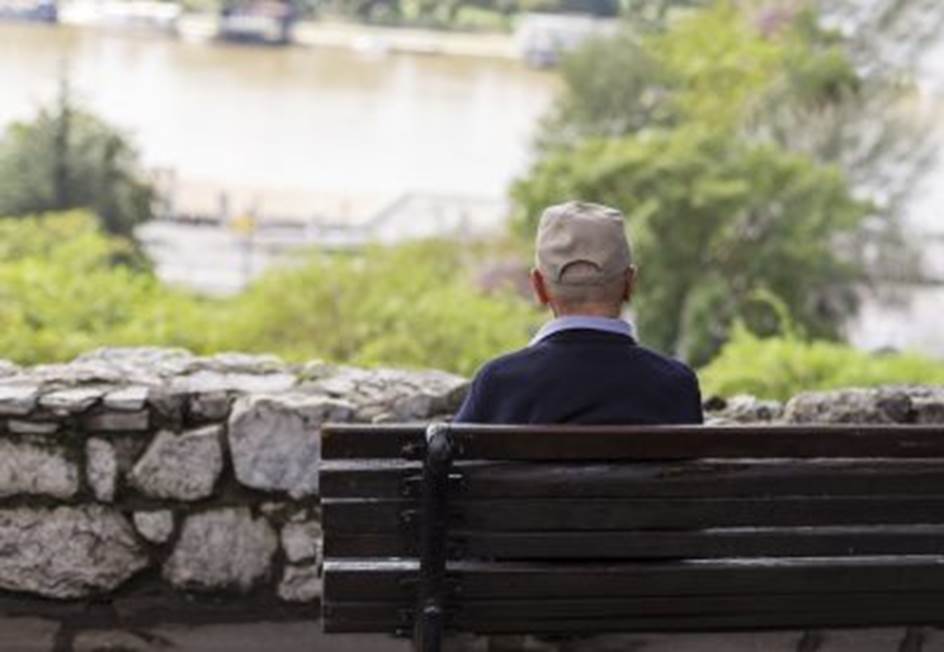
In Western societies, the incidence of social isolation has been increasing since the industrial revolution, and an estimated 28 percent of people in the US live alone today, often not by choice. Loneliness makes the elderly vulnerable to greater risk of dementia, depression, chronic illness and other infirmities
Penalty of Social Isolation
By Dr Syed Amir
Bethesda, MD

Recently, I attended a lunch gathering hosted by a friend and his gracious wife at their residence. Dr Abdullah is a well-known literary figure in the Greater Washington area (GWA) and had traditionally held community receptions every year on Eid, but these were suspended due to the Covid pandemic. The lunch was a delightful experience as I met some old friends whom I had not met in months or years. We revived the bonds and rediscovered the old, familiar joy of social interactions.
It was an especially welcome occasion as we, much like many other seniors, have been reluctant to go out to attend in-person social gatherings for fear of catching the virus. Omicron and its variants, however, are still present in our area, although the incidence and virulence of the disease have declined significantly.
The GWA is populated by socially active South Asian community. In addition to a range of concerts, musical evenings and private gatherings that are normally staged the year round, a distinctive feature has been the popular literary, cultural and poetical gatherings that were regularly organized every month in the pre-epidemic era.
One such Group was founded and promoted by a senior Pakistani veteran journalist and author, Abul Hasan Naghmi. Fiercely dedicated to the promotion of Urdu in North America, he had named his group, Society of Urdu Literature (SOUL) and used to host high-quality lectures and discussions. He himself was a major contributor to his literary show. Sadly, he passed away in December last year and SOUL has since been largely dormant.
Beside SOUL, another literary group that was set up about the same time was modelled on Pakistan’s Halqa-e Arbab-a-Zooq. It was organized and supported by several prominent, senior Pakistani Americans, among them, Kifayat ullah Rehmani, an engineer, and Obaid ur Rehman, a prominent advocate originally from Karachi. Unfortunately, the founders are now deceased; yet the organization survives, largely due to the dedication of a few people, principally Shah Fazal Abbas and the leading scholar and intellectual, Dr Moazzam Siddiqui.
The GWA’s literary and cultural landscape is exquisitely enriched by events launched by the local Aligarh Alumni Association (AAA-DC)), which has a record of organizing impressive international Mushairas, attracting hundreds of poetry-lovers. Many of the literary activities are still ongoing, albeit via zoom. Some young alumni of the University have infused new blood and fresh enthusiasm into the aging organization, evidenced by a bevy of recent cultural events staged to honor recently departed Urdu poets and scholars. Both AAA-DC and the Karachi University Alumni Associations, in addition to hosting cultural and literary events, also raise funds to support students in need and provide other resources to help mother institutions.
Another noteworthy organization that kept social life alive in the Washington area even during the darkest days of the pandemic is the Saturday Forum, formally named Indian Diaspora, founded and sustained by the efforts of Dr Razi Raziuddin, a scientist by profession. Its electronic format enables it to attract a large international audience, and a galaxy of outstanding and eclectic speakers invited to address a wide-ranging of topics.
These many and varied social organizations in our area have played highly beneficial and vital roles in keeping the social structure of the community largely undisturbed. We now know that benefits of socialization extend beyond the immediate good feeling we draw from such interactions, especially during stressful times. In Western societies, the incidence of social isolation has been increasing since the industrial revolution, and an estimated 28 percent of people in the US live alone today, often not by choice. Loneliness makes the elderly vulnerable to greater risk of dementia, depression, chronic illness and other infirmities.
Many of us have firsthand experience of elderly friends and relations going through social deprivation, especially exacerbated by onset of physical infirmities. Recently, my cousin in his early nineties passed away. He had been a top executive in a company and had spent much of his employment abroad, finally returning to spend his last years in Pakistan. Although unmarried, he lived comfortably in Karachi, and initially had many friends and family members. He outlived them all, and as time passed and his mobility declined, his sense of isolation grew intensely. Except for a few very close relations, and a niece who took care of him, he had no outside contacts or visitors. He was often overwhelmed by nostalgia, fondly remembering stories from his early youth spent in India.
A 2018 study cited by the Washington Post suggested that loneliness is not limited to older individuals; it can affect people of all ages, from 20 to 80 years. Loneliness and social isolation, however, are not synonymous. Paradoxically, a person can be lonely while surrounded by others. Much like social isolation, loneliness can cause depression, and generate feeling of unhappiness. The situation is somewhat better in countries such as Pakistan, where weddings and other festive occasions with large gatherings offer welcome opportunities to conveniently meet family and friends.
A range of illnesses are also attributable to social isolation, including heart disease , obesity , a weakened immune system, and cognitive impairment . In contrast, the mere ability to talk, laugh and sit together with friends and family members enhances physical and mental health and wellbeing. Those who have a large circle of family and friends can lower their risk of premature death by an estimated 32 percent, more than can be achieved by exercise and diet.
Although Covid-19 and its numerous variants exacerbated the problem of social isolation that we witness today, it is not entirely responsible for this affliction. The ubiquitous spread of electronic and social media, TV, smart phones, Facebook, and Twitter have all played a major role, as people spend inordinate amounts of time indoors, immersed in activities requiring no interactions with other humans.
Recent research studies have sought to dissect any potential role that genes and environment play in causing or aggravating the feeling of loneliness that people experience. Initial findings suggest that those with genetic predispositions to loneliness and social isolation are more vulnerable to depressive and psychiatric disorders. These studies, however, are still ongoing and definitive results are awaited. Meanwhile, most of us can largely overcome any genetic disadvantage we might have inherited by actively seeking and making new friends, besides adopting some new hobbies.
. (Dr Syed Amir is a former Assistant Professor, Harvard Medical School, and a health science administrator, US National Institutes of Health)

